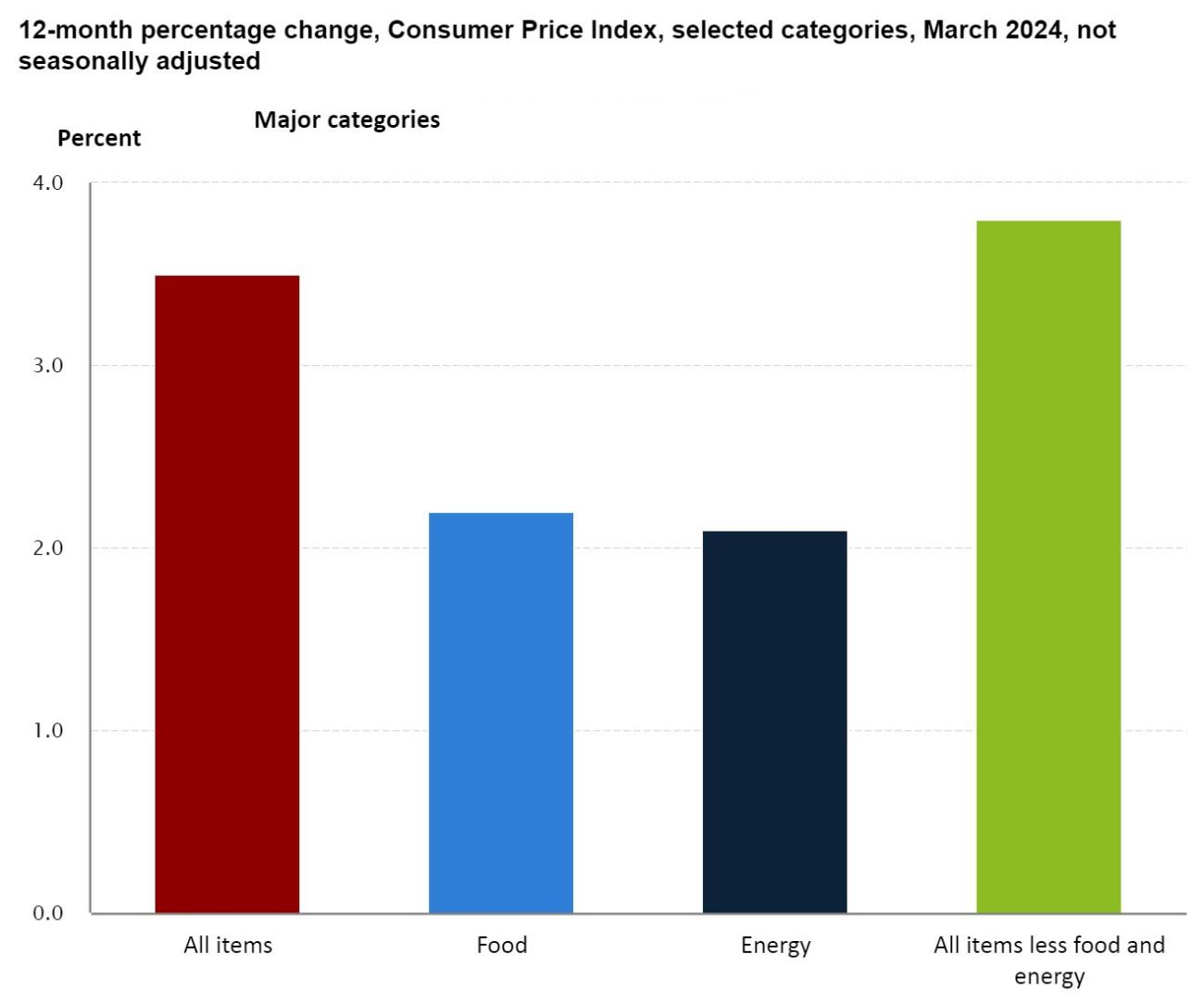Grocery Inflation Stays at Zero
While many headlines about the latest inflation report from the U.S. Bureau of Labor Statistics (BLS) are focusing on the hotter-than-anticipated overall rate, the grocery sector remains relatively cool.
The general Consumer Price Index (CPI) rose 0.4% in March, above the projected uptick of 0.3%. Higher energy costs, including fuel, and rising prices for health care, apparel and transportation services contributed to the elevated pace of inflation during that period.
[RELATED: Online Competition for Supermarkets Gets More Intense]
The grocery sector, though, remained stable, unchanged from the 0.0% rate the prior month and up 1.2% on a 12-month basis. Within the food-at-home category, the index for cereals and bakery products dipped 0.9% in March, the largest one-month seasonally-adjusted decrease in that area. Dairy and related products posted a 0.1% decline, while “other” food at home went down 0.5%, driven by a 5% slide in the CPI for butter.
Some categories did experience price hikes in March. The index for meats, poultry, fish and eggs rose 0.9%, largely due to a 4.6% hike in egg prices in the wake of highly pathogen avian influenza concerns. Nonalcoholic beverages went up by 0.3%, while fruit and vegetable prices edged 0.1% higher last month.
Meanwhile, the cost of going out to eat remains comparatively higher. The food-away-from home index rose 0.3% in March, according to BLS data.
U.S. Agriculture Secretary Tom Vilsack addressed the differences in the food-at-home and food-away-from-home arenas during an interview this week with Bloomberg. “There is a significant difference between what people are paying at the grocery store in relationship to what they are paying at restaurants. What you will find is, if you go deeper into those numbers, the opportunities at grocery stores are improving significantly, but it is restaurants where we are still seeing a bit of high inflation,” he declared.
Andy Harig, VP, tax, trade, sustainability and policy development at FMI - The Food Industry Association, agrees food-at-home numbers are welcome news for grocers and their customers. "The March CPI data continues to be positive for food shoppers and demonstrates that cooking at home is still the best choice for budget-minded shoppers,” he said.
Still, he pointed out that the higher overall inflation rate is a signal that the prices remain volatile. “Unfortunately, the data also indicates that despite recent moderation in inflation, there may still be some bumps on the road to our economic recovery. Factors such as volatile energy prices – which not only fuel overall inflation but also directly influence grocery prices through food production and transportation – continue to rise,” Harig remarked.
[RELATED: Grocers Under Fire For High Food Prices]
Ending on a bright note, Harig asserted that the overall economic outlook is not as bad as once feared. “Unemployment is at a 54-year low. Weekly household grocery spending data from FMI also shows that consumer spending has remained stable over the past year. And when examining sentiment, a recent FMI shopper survey found that the majority of Americans continue to enjoy grocery shopping – with eight out of 10 loving, liking, or not minding their trip to the store – underscoring consumers’ resilience and flexibility in making purchasing decisions that suit their individual and family needs,” he said.
Grocery inflation has emerged as a talking point for the upcoming presidential election. “Today’s report shows inflation has fallen more than 60% from its peak, but we have more to do to lower costs for hardworking families. Prices are still too high for housing and groceries, even as prices for key household items like milk and eggs are lower than a year ago,” President Joe Biden declared on April 10 after the BLS data was released.
In late March, a Super PAC associated with GOP candidate Donald Trump unveiled a website called “Biden-Mart” that compares grocery prices under Trump as president and under Biden in the White House.







